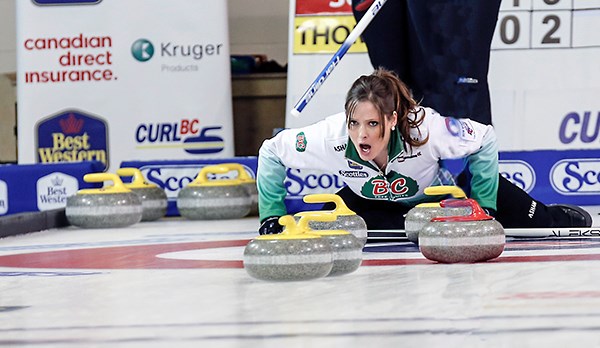An effort to maximize arena ice time could mean limiting or even phasing out curling at the Poirier Sport and Leisure Complex — a proposal that is not sitting well with members of the Coquitlam Curling Club.
The options were laid out to city council on Monday, with recreation staff noting that low participation rates mean the sport is heavily subsidized. According to a report, cost recovery for curling is about 20%, compared to 60% for other ice arena uses.
Staff said it would be possible to convert the ice surface for other sports, like skating or minor hockey, a prospect Coquitlam Curling Club representative Dale Gregory said would be disappointing for members.
“I don’t think that will go over well with the curlers,” he said, noting that the ice quality has made it difficult to convince more teams to use the arena. “If the city provided better ice, we might attract more curlers.”
Curling is a growing sport, he added, noting that junior programs indicate a healthy future for membership in the club. There are currently 517 members, of whom 285 reside in Coquitlam, according to the city.
Gregory said the sport has difficulty generating the same revenue as other user groups largely due to the fact ice time is allowed for School District 43’s curling programs.
“If they are concerned about not providing enough funds for the curling ice, they need to look at that particular aspect,” he said.
But Michelle Hunt, the parks and recreation planning and business services director, said during Monday’s meeting that demand for arena services is not being met. Currently, 4.1 sheets of prime-time ice are available, but there is demand for 4.6, and the rest is pushed to off-prime time slots, according to the report.
The lack of ice time has forced some user groups to cap their enrolment, she said.
“Some of them are obviously using non-prime ice time as well,” Hunt added. “Some of the kids are playing early in the morning or later at night.”
By 2025, she said, demand is expected to increase to between 5.2 and 5.6 ice sheets, tapering off to 4.7 to 5.0 in 2035.
“From our perspective, it is not a viable option to maintain the status quo.”
One possibility would be to limit the curling season to two months a year at Poirier and co-ordinate with Port Moody or another city to cover the other two months of the season at their facilities. That would free up the ice for other uses for more months of the hockey and skating seasons.
Also included in the list of options is exploring partnership opportunities to build a new standalone curling facility. The report includes a proposal that would see curling at Poirier completely phased out, with club members forced to go to other cities to compete.
The ice surface discussions are part of the city’s plans to address long-term service needs in the community. A process was begun in January 2015 to identify gaps in facility use and staff said the draft proposals will now be presented to the city’s sport council and user groups for consideration and feedback.
Discussions are also expected to take place with the cities of Port Coquitlam and Port Moody to determine opportunities where collaboration may be possible, the city said in a press release.
• To view the full report to committee, go to http:bit.ly/arenastrategy.
@gmckennaTC



